45 F. high in the Twin Cities Tuesday.
48 F. average high on November 5.
45 F. high on November 5, 2012.
Slushy roads this morning; heaviest accumulation west of MSP metro.
9" snow reported far southwest Minnesota
Psychology of Snow
A
veritable blizzard of e-mails, texts, tweets and calls came into my
office yesterday from concerned citizens. You would have thought I was
tracking a cloud of radioactivity, a volcanic eruption near Willmar - or
maybe a swarm of zombies showing up on Doppler.
"Is it going to be bad?" No. It's just snow.
"Why
do we panic so much now for just a few inches of snow?" someone asked
at a St. Paul Rotary talk yesterday. Great question. My hunch? Far more
traffic on area roads. An inch of snow at the wrong time (and
temperature) can wreak havoc with people's schedules. That, and a steady
drumbeat of weather drama in the media. Hey, storms are good for
ratings, right?
The reality: it's tough getting a huge pile of
snow when there's so much mild air already in place, and soil
temperatures are still relatively warm from a few days in the 40s and
50s. A fresh blast of arctic air usually precedes our most notable
snowfalls, when not only the air but the ground is cold enough for the
snow to stick and accumulate rapidly.
Our quick shot of slush
gives way to chilled sun later today, any snow in your yard mostly-gone
by Thursday. 40s return early next week before another cold frontal
passage Monday and Tuesday. Cold but not exactly arctic. A zonal, west
to east wind flow from the Pacific may prevent any extended bitter
outbreaks looking out the next 2 weeks or so.
Saved By Warm Ground Temperatures.
Monday and much of Tuesday models consistently brought the heaviest
snow bands just south/east of the Twin Cities. But after a few days of
40s and 50s ground temperatures were too warm for rapid accumulation. It
turns out the heaviest band set up just north/west of MSP, some 2-4"
amounts as of midnight over Wright County, as much as 4-9" over far
southwest Minnesota as of midnight.
Click here for the latest map showing snowfall totals. For an updated look at (text) amounts
click here, data courtesy of NOAA. Yes, air temperatures in the lowest mile matter, so do soil temperatures.
Seasonably Chilly.
Highs may hold in the upper 30s to near 40 today and Thursday, then
recover into the 40s in time for the weekend. Colder, Canadian air
dribbles south next week, readings below average. A few light (rain)
showers are possible Friday, maybe a coating of snow up north to help
with tracking for Saturday's Deer Hunting Opener. Graphic: Weatherspark.
Another Upward Blip In Temperature Third Week of November?
The GFS model has been fairly consistent, showing more 40s, even a few
50s, by the third week of November. The week after next may feel more
like mid-October.
Modified Zonal Flow.
The map above shows 300mb jet stream winds as of Tuesday evening at 6
PM, howling from the southwest for much of America. Winds aloft are
forecast to be zonal, blowing primarily from west to east, looking out
the next 2 weeks, keeping any bitter air well north of the USA. Cold air
will still push into the northern states from time to time, but as long
as steering winds blow from the Pacific (and not the Yukon) we'll avoid
tracking Arctic air. Map: San Francisco State University.
"The White Hurricane" - How Far We've Come With Weather Technology.
In 1913 how did mariners get updated storm information? They didn't.
When they left port they were on their own. That's problematic when an
extreme storm with 90 mph wind gusts whips up. In today's edition of
Climate Matters
we take a look back in time, and project forward to a continued mild
bias for much of the USA east of the Rockies the next 2 weeks. Is El
Nino coming back? The trends seem to suggest that may be the case by
early 2014: "
WeatherNationTV Chief Meteorologist Paul Douglas looks
back at "The White Hurricane" that took the lives of nearly 270 mariners
on the Great Lakes. Also, what do the next few weeks have in store and
could we see El Niño this winter?"
Along An Arizona Highway, Dust Storms A Deadly Part Of Life.
Weatherbug has the article; here's the introduction: "
The
intense dust that blew through a stretch of highway, killing three
people and injuring others Tuesday, is nothing new for the residents of a
southern Arizona town between Tucson and Phoenix. Every couple years a
dense ribbon of dust -- roughly a quarter-mile high and 20 to 30 miles
long -- causes a wreck along the same stretch of highway, near the town
of Picacho, said Ken Waters, a warning coordination meteorologist for
the National Weather Service in Phoenix. Edward Bruce Martan, 63, was
born and raised in this town and said he can almost sense when a ribbon
is about to hit. "You can feel it," he said. "It`s when a cool weather
front comes through. You can just predict it. It`s the same place every
time. Milepost 214..."
The 5 Things You Need To Know About Wildfires. Here's a clip from a story at
Huffington Post: "
With
each passing dry season, it seems headlines about devastating wildfires
are becoming increasingly commonplace. In 2012, such blazes consumed an acreage
equivalent to the combined size of Massachusetts and Connecticut. This
year has likewise proved to be exceptionally devastating in many
regards. You've likely heard conversations about the Rim Fire --
California's fourth-largest wildfire ever, burning a total of 260,000 acres -- or the Yarnell Fire, a tragedy that claimed the lives of 19 firefighters in Arizona.
After hearing about these events time and time again, one might develop
questions that most articles on the topic fail to address. Why do
wildfires continue year after year? Can't we do something to better
manage fires?" (Image above: Capital Weather Gang).
Death By Lightning A Danger In Developing Countries.
It's an ongoing danger here too, but we have technologies and warning
systems (and mass media) that many countries simply don't have access
to.
National Geographic has the report; here's a clip: "
Developing
countries have long lists of problems—illiteracy, disease, hunger,
corruption. There's one more problem that has gotten less attention,
until recently: lightning strikes, which cause a disproportionately high
number of deaths in developing countries. Thanks to years of public
education campaigns, most Americans know that "when thunder roars, go
indoors." But that basic guideline isn't as well known in many
developing countries, which consistently see hundreds or even thousands
of deaths and injuries per year from lightning strikes. Experts point to
lack of education, but a number of doctors and meteorologists from
around the world are trying to change that..."
Photo credit above: "South Africa's Cape Town had a severe electrical storm that ripped through the skies at regular intervals for more than an hour." Photograph by Lynda Smith, Your Shot, National Geographic.
To Stave Off Decline, Churches Attract New Members WIth Beer. It gives communion a whole new meaning. Here's a clip of an
NPR story that made me do a double-take: "
With
mainline religious congregations dwindling across America, a scattering
of churches is trying to attract new members by creating a different
sort of Christian community. They are gathering around craft beer. Some
church groups are brewing it themselves, while others are bring the Holy
Mysteries to a taproom. The result is not sloshed congregants; rather,
it's an exploratory approach to do church differently..."
Photo credit above: "
Todd Fadel, at piano, leads singers at a recent gathering of Beer & Hymns at First Christian Church Portland."
John Burnett/NPR.
Thorium-Fueled Automobile Engine Needs Refueling Once A Century.
Industry Tap has the remarkable story - here's the introduction: "
There
are now over one billion cars traveling roads around the world directly
and indirectly costing trillions of dollars in material resources, time
and noxious emissions. Imagine all these cars running cleanly for 100
years on just 8 grams of fuel each. Laser Power Systems (LPS) from
Connecticut, USA, is developing a new method of automotive propulsion
with one of the most dense materials known in nature: thorium. Because
thorium is so dense it has the potential to produce tremendous amounts
of heat. The company has been experimenting with small bits of thorium,
creating a laser that heats water, produces steam and powers a mini
turbine..."
Photo credit above: "
Thorium Concept Car." Image Courtesy www.greenpacks.com
"Enders Game" And Maneuver Warfare. With the movie about to come out I found this concerpt intriguing; here's the intro to a story at
medium.com: "
In
the mid-1980s there arose a new theory of warfare. The idea is to avoid
large force-on-force attacks, use speed instead of firepower and strike
at the enemy’s vulnerabilities. Proponents describe it as fighting
smart. You attack the enemy’s thinking, forcing on him an unending chain
of hard choices. Still practiced today, it’s called “maneuver warfare.”
At the same time the new concept was gaining popularity, an
award-winning military science fiction novel was released. Orson Scott
Card’s Ender’s Game is now a sci-fi classic..."
Image credit above: Lionsgate.
TODAY: Slow, slushy start. Chilled PM sun. Winds: NW 10. High: 39
WEDNESDAY NIGHT: Mostly clear, a few slippery spots. Low: 26
THURSDAY: Partly sunny, better travel day. High: 42
FRIDAY: Clouds increase, PM showers. Wake-up: 28. High: 44
SATURDAY: Mostly cloudy, cool wind. Wake-up: 33. High: 41
SUNDAY: Fading sun, close to average. Wake-up: 27. High: 46
MONDAY: Blue sky, windy and colder. Wake-up: 35. High: 38
TUESDAY: Some sun, feels like (late) November. Wake-up: 24. High: 34
Climate Stories....
The Storm Of The Century That Comes Year After Year. No kidding.
The PBS Newshour has the story (and video); here's a clip: "
Klaus
Jacob, a special research scientist with the Lamont-Doherty Earth
Observatory, discusses the possible link between Hurricane Sandy,
climate change and a move toward more frequent and disastrous weather
events. Plus, why the 100-year-storm will become the two-year storm by
the end of the century. For more, watch Miles O'Brien's reports on preparing for the next superstorm. This series was created in partnership with NOVA and derived from Megastorm Aftermath..."
The Subterranean War On Science. Here's an excerpt from an eyebrow-raising article at
The Association for Psychological Science: "...
This
conspiratorial element provides a breeding ground for the personal and
professional attacks on scientists that seemingly inevitably accompany
science denial. The present authors have all been subject to such
attacks, whose similarity is notable because the authors’ research spans
a broad range of topics and disciplines: The first author has
investigated the psychological variables underlying the acceptance or
rejection of scientific findings; the second author is a
paleoclimatologist who has shown that current global temperatures are
likely unprecedented during the last 1,000 years or more; the third and
fourth authors are public-health researchers who have investigated the
attitudes of teenagers and young adults towards smoking and evaluated a
range of tobacco control interventions; and the fifth author has
established that human memory is not only fallible but subject to very
large and systematic distortions..."
Researcher Helps Sow Climate Change Doubt.
The Boston Globe has the story - here's a clip: "...
Outside
the Beltway, the science is largely settled. Yet in the capital,
government response to one of the major environmental and economic
challenges facing the planet is mired in an endless cycle of conflicting
claims and partisan finger-pointing. The work of Soon, and a handful of
like-minded scientists, is seen by critics in Congress and elsewhere as
a case study in how this deadlock has been engineered by energy
companies and antiregulation conservatives. “They are merchants of
doubt, not factual information,’’ said Senator Sheldon Whitehouse, a
Rhode Island Democrat who delivers a Senate speech every week demanding
stronger air-quality standards. “Their strategy isn’t to convince people
that the scientists are wrong. Their strategy is simply to raise the
specter that there is enough doubt that . . . you should just move onto
the next issue until this gets sorted out,’’ he said. “It gives
credibility to a crank point of view....’’
Photo credit above: PETE MAROVICH FOR BOSTON GLOBE. "
Willie Soon’s work is funded by energy industry grants."
 Adapting To Climate Change Does Not Mean Accepting It
Adapting To Climate Change Does Not Mean Accepting It. Here's a clip from an entry at
Huffington Post: "...
My
view is that the technical breakthroughs needed for this transformation
will come. I am counting on human ingenuity coupled with a growing
cultural awareness of the need for clean, renewable energy. As early
20th century New Yorkers stepped through the manure in lower Manhattan,
they knew that the era of horse-based transportation had reached its
limit. Horses worked well in small towns, but created problems in larger
cities. We know that a planet with over seven billion people cannot
fuel its economy the same way it did when it was as a planet of one or
two billion people. We also need to remember that adapting to climate
change does not mean that we accept it. We still need to eliminate
global warming by reducing the production of greenhouse gases."
Facing The Change: Personal Encounters With Global Warming.
How do you communicate the science (and implications) without people
becoming hopelessly depressed, agitated and unwilling to engage? Great
question.
Here's an excerpt
focused on a book that is attempting to dive into the psychological
impact of climate change, how it's impacting us emotionally: "
Facing the
Change: Personal Encounters with Global Warming is a new kind of book
about climate change. Instead of experts talking at us, this innovative
literary collection shares the voices of fellow citizens struggling to
make sense of the concrete changes taking place in our world today.
Instead of scientific facts and predictions, this book offers personal
essays, poems, and short stories expressing what's going on in people's
lives, hearts, and dreams. Instead of leaving readers guilty and
disempowered, this book will help us all to begin to work through the
full range of emotions - confusion, fear, sorrow, anger, and realistic
hope - that we must face in confronting the crisis..."
Power Plants Try Burning Wood With Coal To Cut Carbon Emissions. Here's a clip from an interesting story at
The New York Times:
"Even as the Environmental Protection Agency considers requiring
existing coal-fired power plants to cut their carbon dioxide output,
some utilities have started to use a decidedly low-tech additive that
accomplishes that goal: wood. Ranging in size from sawdust to chunks as
big as soup cans, waste wood from paper mills, furniture factories and
logging operations has been used with varying levels of success.
Minnesota Power, which once generated almost all of its power from coal
and is now trying to convert to one-third renewables and one-third
natural gas, found that
co-firing with wood was a quick way to move an old plant partly to the renewable category..."
Photo credit above: American Electric Power. "Using modest amounts of wood at a large number of coal plants could be a relatively quick way to phase in renewable energy."
Will Climate Change Imperil Your Cup Of Starbucks?
Oh no, not the coffee. Take anything but please leave me a few feeble
coffee beans to spend my "mature years". We'll see - here's an excerpt
from an entry at National Geographic: "...To
the relief and potential horror of caffeine addicts everywhere, Feeley
said, “To see species move upslope, that means they are responding to
climate change. So that’s a good thing. Because if they don’t respond,
they are almost certainly doomed to extinction.” So, could coffee become
an imperiled species, threatened by the steady march of climate change?
It’s too soon to tell, but in remembering that jungle conversation I
had in southern Peru last summer, I found some clues in Justin Gillis’ page-one story in The New York Times on Nov. 2 under the headline: “Climate Change Seen Posing Risk To Food Supplies...”
Shell Announces Plans To Resume Arctic Drilling In 2014. Here's the intro to a story at
oilprices.com: "
After
a disastrous campaign in 2012, which forced the company to abandon all
plans for this year, Royal Dutch Shell has announced that it will return to the Arctic
waters in 2014 to begin exploring for oil again, but on a much smaller
scale. One of the main differences this time will be the abandonment of
the Kulluk conical drilling rig that ran aground
last time as Shell tried to toe it back to Port near the end of the
2012 drilling season. As a replacement Shell has leased out the Polar
Pioneer, a semi-submersible drilling rig owned by Transocean. The Kulluk
may well be put back into operation at some other point in the future,
but only if it is deemed cost effective to repair the damaged unit..."
Photo credit above: "Kulluk rig."
Ten Days: How We Imagine Climate Change.
The role of aerosols is coming under increasing scrutiny. Some of that
air pollution may actually be preventing an even sharper spike in
temperatures, worldwide. Here's a clip from a story at Australia's
The Conversation: "...
But
here’s the twist. If all emissions were to stop tomorrow, so would the
output of those human-made aerosols reflecting radiation back into
space. These aerosols have a residence time in the atmosphere of just ten days,
meaning that after just ten days it would be like increasing CO2
emissions by 50%. It kind of makes reducing CO2 emissions to 5% off 2000
levels by 2020 seem rather pathetic. Ten days, a time-horizon that
people in the city should be able to relate to. If this were to happen,
the likelihood of the positive feedbacks that are triggered by warming,
such as more abundant water vapour, natural albedo loss (like melting
ice an glaciers), extensive firestorms, and methane pulses, would be
greatly enhanced..."
Photo credit above: "
Aerosols such as this smog over Mexico City have helped keep temperatures down. What would happen if they were cleaned up?"
Flickr/brian.gratwicke.

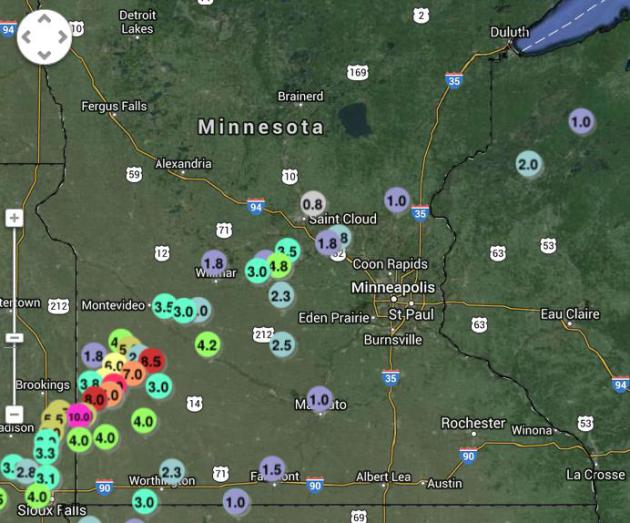
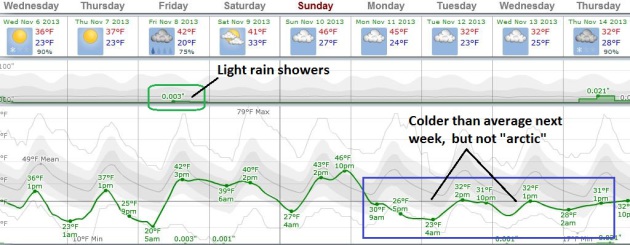

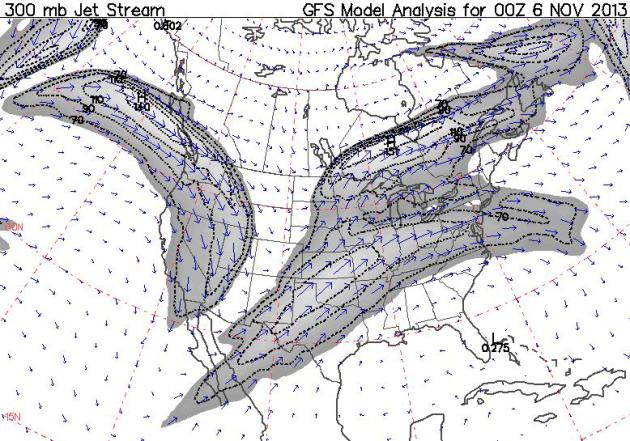
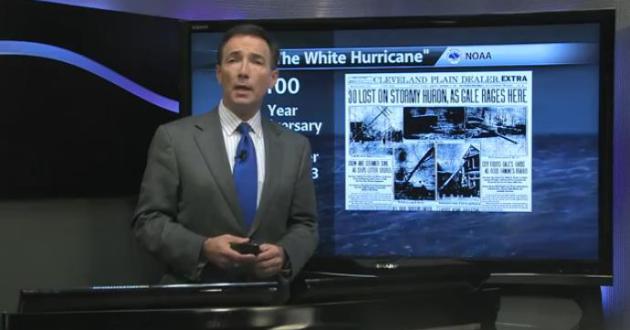
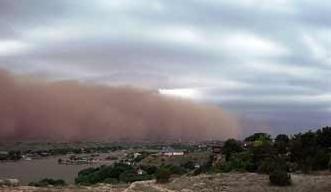
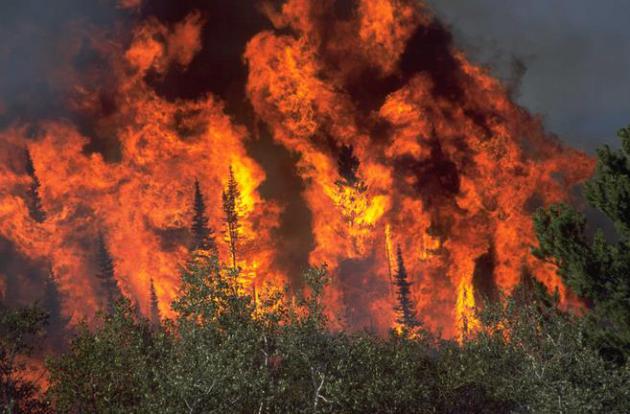
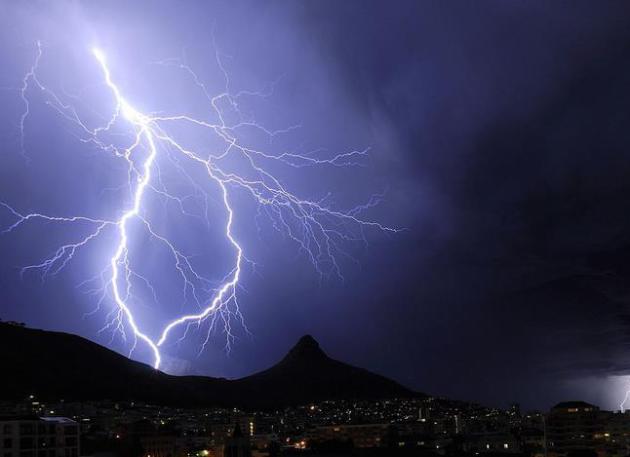



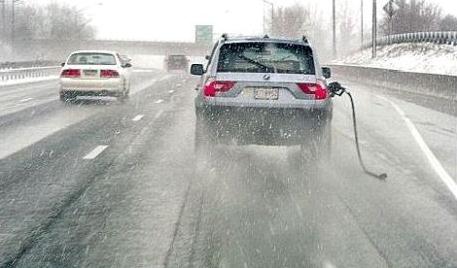
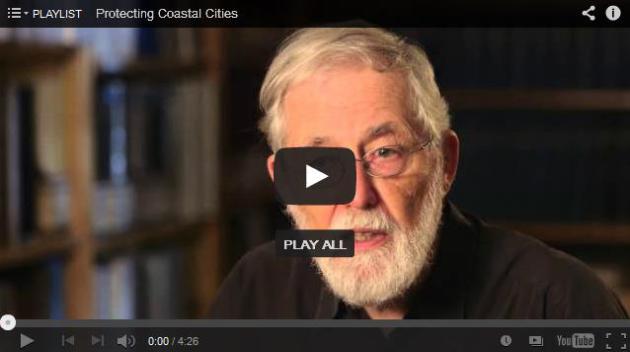


.jpg)
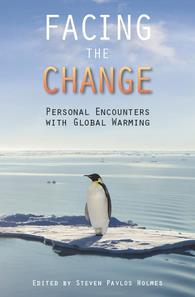
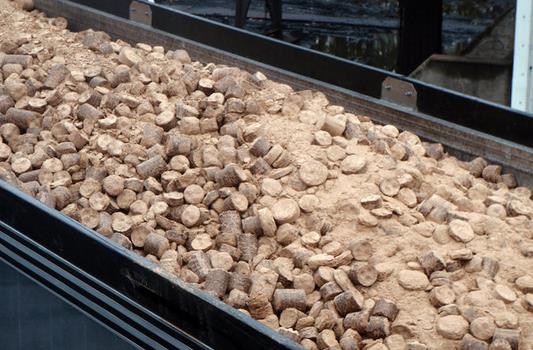

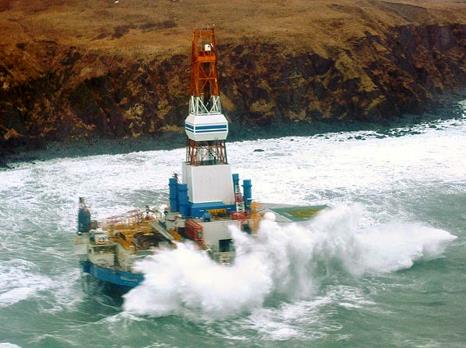

No comments:
Post a Comment